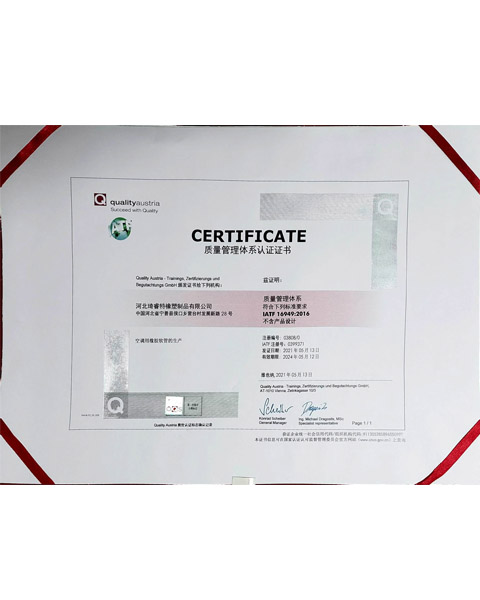compression pipe coupling
Understanding Compression Pipe Couplings An Essential Component in Plumbing Systems
In the realm of plumbing and fluid dynamics, ensuring a secure and leak-free connection between pipes is paramount. One crucial component that facilitates this is the compression pipe coupling. This versatile fitting plays a pivotal role in various applications, from residential plumbing to industrial systems. In this article, we will delve into the functionality, benefits, and installation process of compression pipe couplings.
What is a Compression Pipe Coupling?
A compression pipe coupling is a type of fitting that connects two sections of pipe, allowing for a leak-proof seal. This coupling typically comprises three main parts the body, the nut, and the ring (or ferrule). The design is straightforward yet highly effective. When the nut is tightened onto the body, it compresses the ferrule against the pipe’s outer surface. This action creates a strong mechanical grip and seals the connection, preventing any potential leaks.
Compression couplings can be used with various pipe materials, including copper, PVC, and brass. They are particularly favored for their ease of use and adaptability in different plumbing applications, making them suitable for both beginners and seasoned professionals.
Advantages of Compression Pipe Couplings
1. Ease of Installation One of the most significant advantages of compression couplings is their straightforward installation process. Unlike soldering or welding, which require specialized tools and skills, compression fittings can be installed without heat. A simple wrench is often all that is needed to achieve a secure connection.
2. Adjustability Compression fittings offer the flexibility to disassemble and reassemble pipes without damaging them. This feature is beneficial when adjustments or modifications are necessary, making them ideal for temporary connections or ongoing projects.
3. Compatibility with Various Pipe Materials Compression couplings can accommodate multiple pipe types, including rigid and flexible materials. This versatility allows plumbers and technicians to utilize them across diverse applications, ranging from high-pressure water lines to natural gas installations.
4. Leak-Free Connections When properly installed, compression fittings provide a tight seal that is resistant to leaks. This quality is crucial in maintaining the integrity of plumbing systems and preventing water damage or other hazardous situations.
5. Cost-Effectiveness Given the ease of installation and the reduced need for specialized tools, compression pipe couplings can be a cost-effective solution. They save time and labor, which often translates to lower overall project costs.
compression pipe coupling

How to Install Compression Pipe Couplings
The installation of a compression pipe coupling is a straightforward process that can be completed with minimal tools. Here’s a step-by-step guide
1. Cut the Pipes Ensure that the pipes are cut cleanly using a pipe cutter. Any rough edges can hinder the sealing capability of the coupling.
2. Deburr the Edges After cutting, it’s important to deburr the edges to prevent damage to the ferrule and ensure a tight seal.
3. Slide On the Nut and Ferrule Before connecting the pipes, slide the nut and ferrule onto one of the pipe ends. The ferrule should be placed before the nut to ensure proper assembly.
4. Insert the Pipe Insert the pipe end into the coupling body. Ensure it’s pushed in completely to allow the ferrule to make contact.
5. Tighten the Nut With the pipe in place, tighten the nut onto the body using a wrench. Be careful not to overtighten, as this can damage the ferrule and compromise the seal.
6. Check for Leaks Once the connection is made, it’s essential to check for leaks by turning on the water or gas supply slowly. Observe the connection for any signs of leakage.
Conclusion
Compression pipe couplings represent a critical element in modern plumbing systems. Their ease of use, ability to create secure connections, and compatibility with various materials make them invaluable across different applications. Whether you’re a DIY enthusiast tackling a home project or a professional plumber engaged in large-scale installations, understanding the functionality and advantages of compression pipe couplings is essential for crafting efficient, reliable plumbing systems. By mastering their installation and maintenance, one can ensure long-lasting performance and durability in any piping project.
-
Ultimate Spiral Protection for Hoses & CablesNewsJun.26,2025
-
The Ultimate Quick-Connect Solutions for Every NeedNewsJun.26,2025
-
SAE J1401 Brake Hose: Reliable Choice for Safe BrakingNewsJun.26,2025
-
Reliable J2064 A/C Hoses for Real-World Cooling NeedsNewsJun.26,2025
-
Heavy-Duty Sewer Jetting Hoses Built to LastNewsJun.26,2025
-
Fix Power Steering Tube Leaks Fast – Durable & Affordable SolutionNewsJun.26,2025

